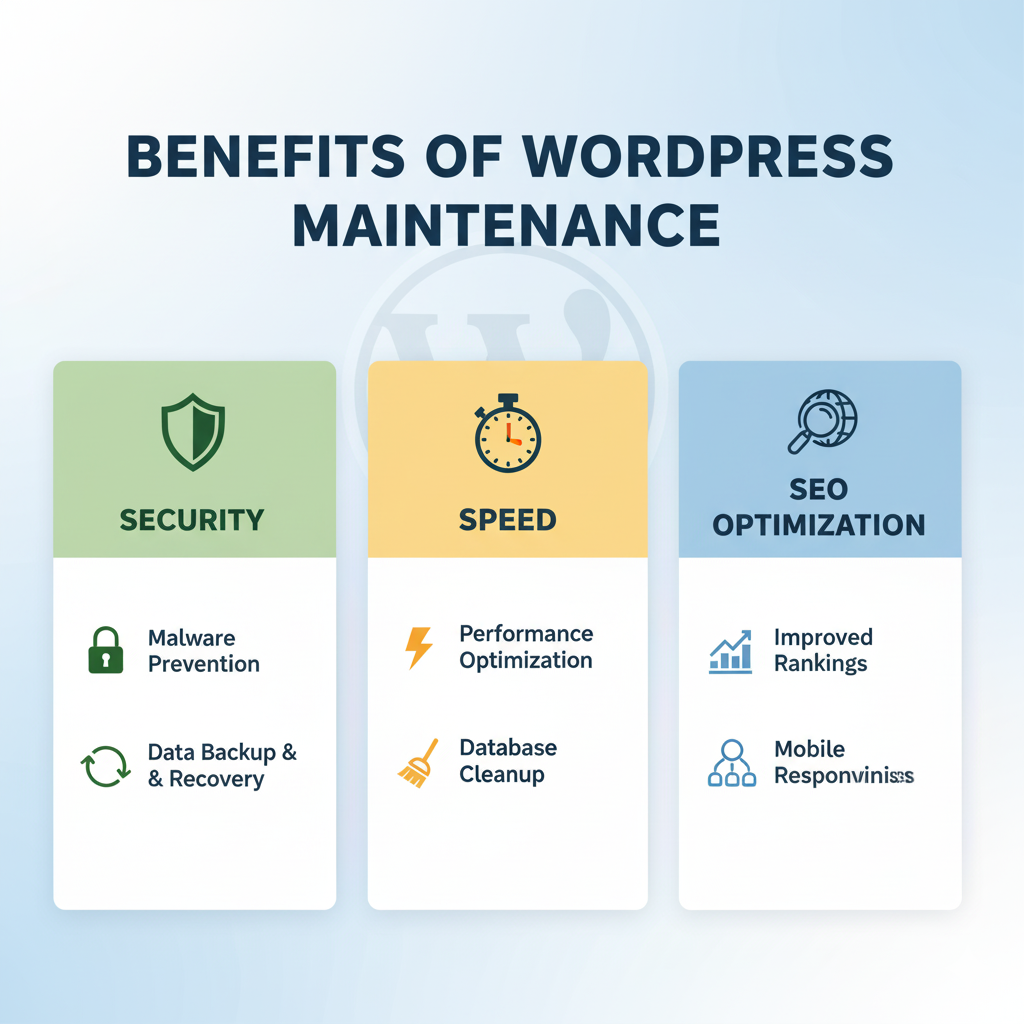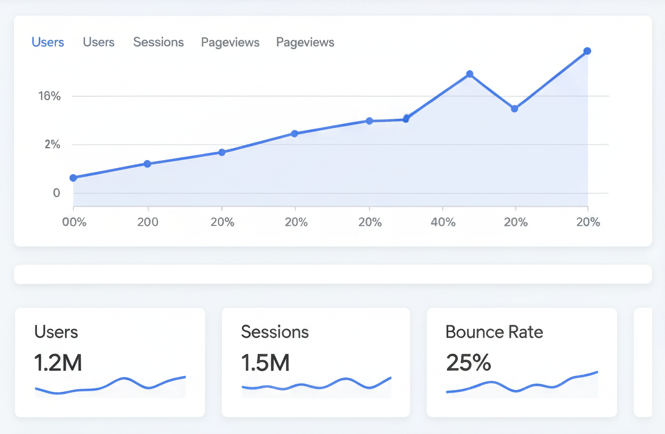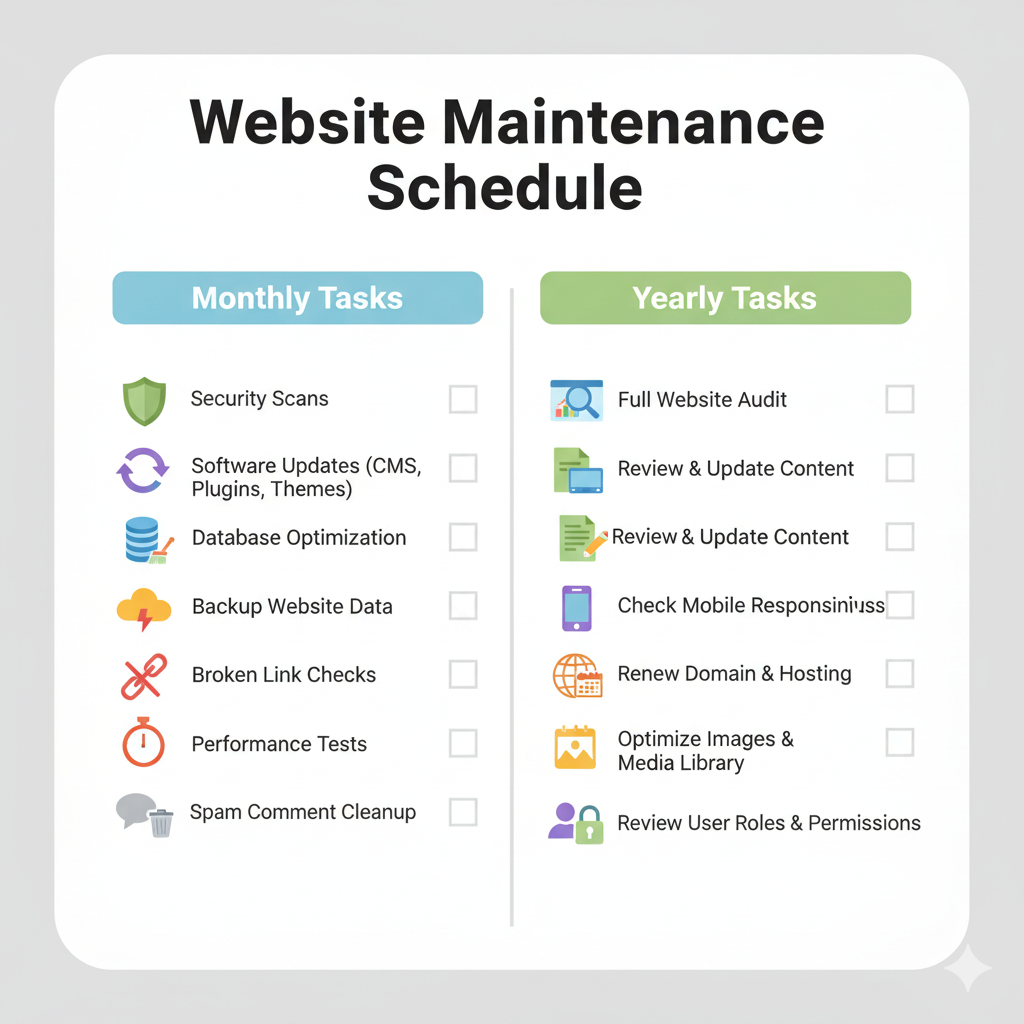Keeping a WordPress site healthy is not just about launching it and forgetting it. Regular maintenance ensures your website stays secure, fast, and optimized for SEO, preventing issues that can hurt traffic or user experience.
Below is a comprehensive WordPress maintenance checklist broken down into monthly and yearly tasks.
Why WordPress Maintenance Matters
WordPress powers over 40% of websites globally. Its flexibility comes with responsibility: outdated plugins, themes, or WordPress core files can make your site vulnerable to hacks, slow load times, and SEO penalties.
Regular maintenance ensures:
- Security against malware and hacks
- Faster page load times
- Better search engine rankings
- Reliable backups and disaster recovery
Reference: WordPress Security Best Practices

Monthly WordPress Maintenance Checklist
1. Update Core, Themes, and Plugins
- Update WordPress core to the latest stable version.
- Update themes and plugins to avoid vulnerabilities.
- Test updates on a staging site before applying to the live site.
2. Backup Your Website
- Schedule a full backup including files and database.
- Store backups off-site using cloud storage like Google Drive, Dropbox, or Amazon S3.
- Test restoring from backup occasionally to ensure reliability.
3. Check Site Speed and Performance
- Use PageSpeed Insights or GTmetrix to check loading times.
- Optimize images with plugins like ShortPixel or Smush.
- Clear cache and remove unnecessary scripts or plugins.
4. Scan for Security Issues
- Run a malware scan using Wordfence or iThemes Security.
- Check for suspicious logins or unauthorized admin accounts.
- Enable two-factor authentication if not already active.
5. Review Analytics and SEO
- Monitor Google Analytics and Google Search Console for traffic trends.
- Identify underperforming pages and optimize titles, meta descriptions, and internal links.

Yearly WordPress Maintenance Checklist
1. Audit Plugins and Themes
- Remove unused or outdated plugins and themes.
- Replace poorly coded or heavy plugins to improve site speed.
2. Review Security Settings
- Change admin passwords and enforce strong passwords for all users.
- Review user roles and remove inactive accounts.
3. Update Content
- Refresh outdated blog posts, pages, or product descriptions.
- Add new internal links to improve SEO.
4. Database Optimization
- Clean up unnecessary data like spam comments, post revisions, and transients.
- Use plugins like WP-Optimize to safely optimize your database.
5. Review Hosting and SSL
- Evaluate your hosting plan for performance and uptime.
- Check SSL certificate expiry and renew if necessary.
- Consider upgrading to faster servers or adding a CDN if traffic has increased.
6. Test Backup and Restore Procedures
- Perform a complete restore from backup to ensure disaster recovery works as intended.
Best Practices for WordPress Maintenance
- Create a maintenance calendar to track monthly and yearly tasks.
- Use staging sites for testing major updates.
- Document changes after updates for accountability.
- Monitor website uptime using tools like UptimeRobot.
Conclusion
A well-maintained WordPress site is secure, fast, and SEO-friendly. By following a structured monthly and yearly maintenance checklist, you minimize risks, keep your users happy, and improve search engine rankings.
Investing a few hours each month and a deeper review yearly ensures your WordPress site performs optimally for years to come.







